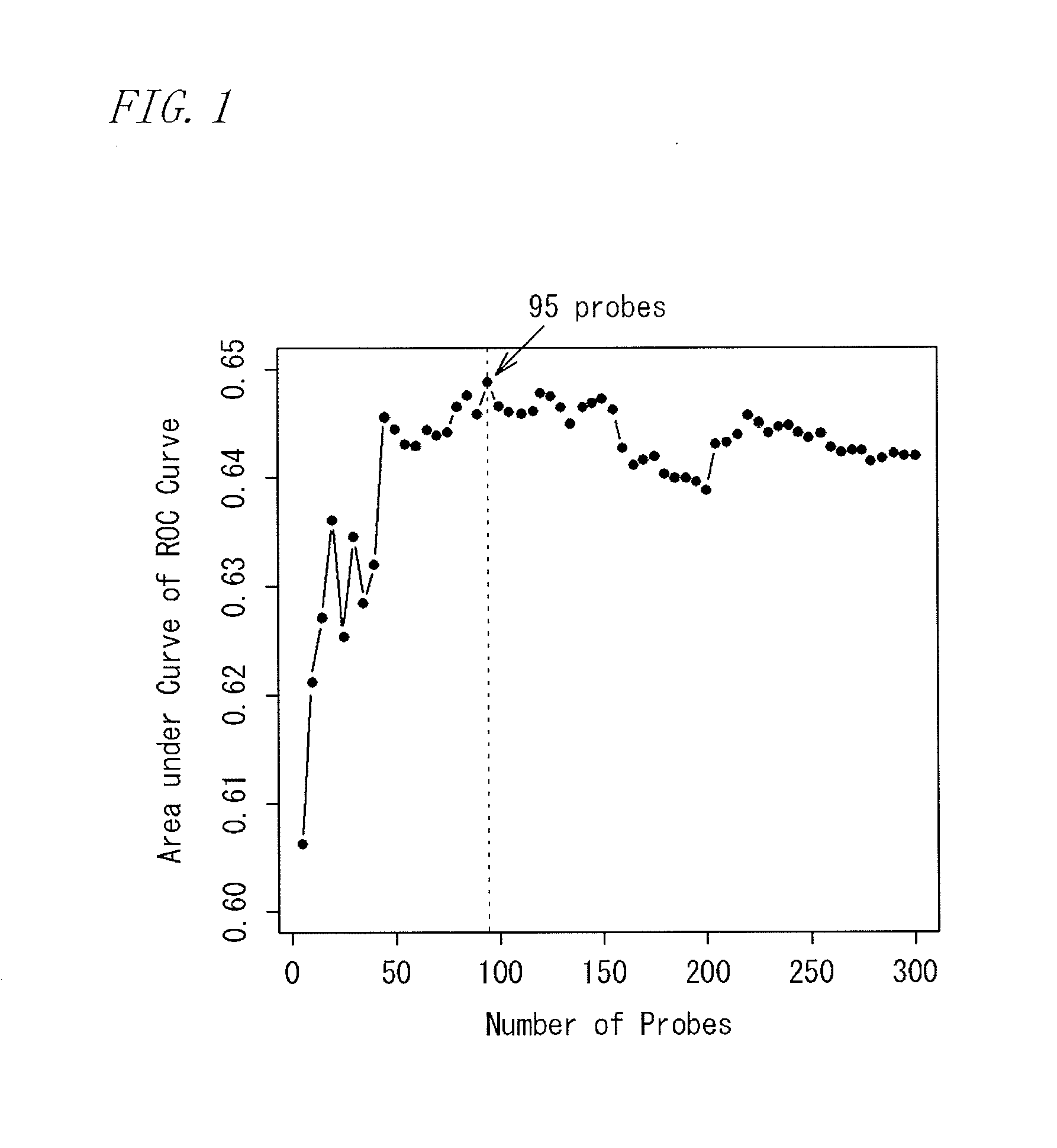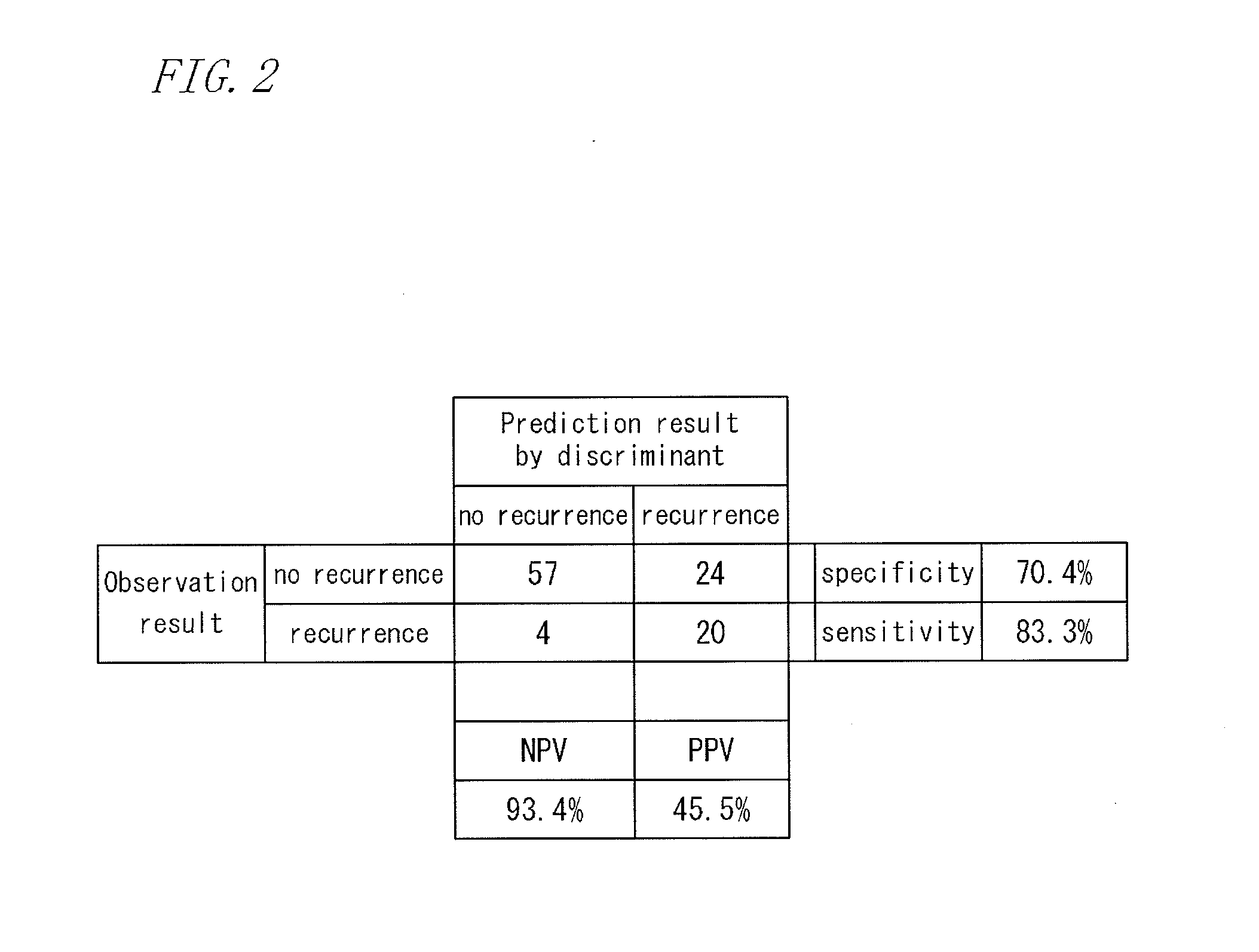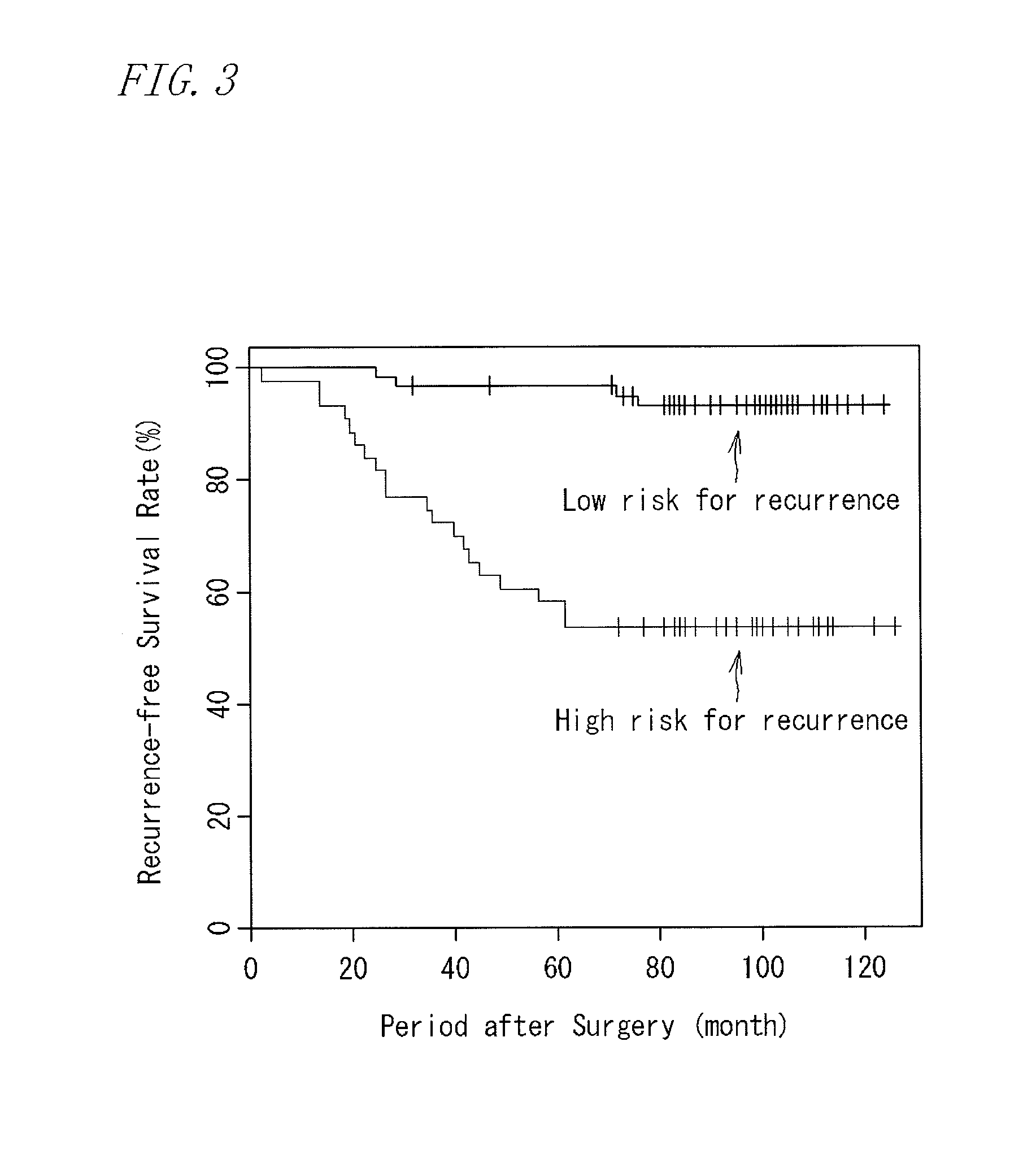Method for examining prognosis of breast cancer
a breast cancer and prognosis technology, applied in the field of breast cancer prognosis examination, can solve the problem of not always properly predicting the prognosis
- Summary
- Abstract
- Description
- Claims
- Application Information
AI Technical Summary
Benefits of technology
Problems solved by technology
Method used
Image
Examples
example 1
[0065]Data of 549 cases were extracted from node-negative and ER-positive cases from 6 datasets including accession numbers: GSE2034, GSE2990, GSE4922, GSE6532, GSE7390, and GSE9195 in NCBI Gene Expression Omnibus of microarray experiments.
[0066]In each data of the 549 cases, the expression level of each nucleic acid (probe set) on the microarray used in the data acquisition was normalized for every dataset by using an RMA algorithm of the analysis software (manufactured by Affymetrix, Inc., trade name: Affymetrix Expression Console software). Next, the average expression level value of the nucleic acid in the dataset was subtracted from the expression level value of the nucleic acid (probe set) on the array used in the data acquisition, to standardize the expression level of the nucleic acid, for every dataset.
[0067]Thereafter, zScore was calculated for each of the nucleic acids (probe sets) on the array, by using a package “GeneMeta v1.16.0” contained in an additional package “Bio...
example 2
(1) Data Acquisition of Expression Level of Nucleic Acids (Probe Sets)
[0079]RNA was extracted from tumor tissues obtained at each surgery of 105 breast cancer patients by using an RNA extraction kit (manufactured by QIAGEN Sciences, trade name: Qiagen RNeasy mini kit).
[0080]The 105 breast cancer patients are node-negative and ER-positive patients who underwent breast conserving surgery followed by radiation therapy or mastectomy during the period 1996-2005. The age range of these patients is 30 to 83, and the median age is 54. Clinicopathological features of the 105 breast cancer patients are shown in Table 3.
[0081]
TABLE 3Number ofPrediction by 95-gene classifierpatientslow-risk grouphigh-risk groupamong 105for recurrencefor recurrencep-patients(good prognosis)(poor prognosis)valuePostmenopausal5637190.10Tumor size TT = 15837210.20T = 2452322T = 3211T = 4000Histological129227Grade2623626314311Presence orpositive1056144absence of ERnegative000Presence orpositive8752350.45absence of P...
example 3
[0105]For the data after normalization obtained in (1) of Example 2, a hierarchical cluster analysis was performed using Spearman's rank correlation coefficient and Ward's method, to create a dendrogram. The result of performing a hierarchical cluster analysis of the expression level data of the nucleic acids (probe sets) in each of 105 cases of breast cancer patients in Example 3 is shown in FIG. 4. In FIG. 4, a heat map representing the expression level of the nucleic acids (probe sets) is shown in the left, and the determination result of recurrence for 10 years after surgery (in the figure, “recurrence”) and no recurrence for 10 years after surgery (in the figure, “recurrence-free”) by the observation result is shown in the right.
[0106]From the result shown in FIG. 4, it is found that the breast cancer patients determined as recurrence (poor prognosis) for 10 years after surgery by the observation result (many in the upper part) and the breast cancer patients determined as no re...
PUM
| Property | Measurement | Unit |
|---|---|---|
| size | aaaaa | aaaaa |
| size | aaaaa | aaaaa |
| weight coefficient | aaaaa | aaaaa |
Abstract
Description
Claims
Application Information
 Login to View More
Login to View More - R&D
- Intellectual Property
- Life Sciences
- Materials
- Tech Scout
- Unparalleled Data Quality
- Higher Quality Content
- 60% Fewer Hallucinations
Browse by: Latest US Patents, China's latest patents, Technical Efficacy Thesaurus, Application Domain, Technology Topic, Popular Technical Reports.
© 2025 PatSnap. All rights reserved.Legal|Privacy policy|Modern Slavery Act Transparency Statement|Sitemap|About US| Contact US: help@patsnap.com



